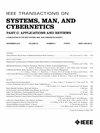Optimizing QoS routing in hierarchical ATM networks using computational intelligence techniques
IEEE Transactions on Systems Man and Cybernetics Part C-Applications and Re
Pub Date : 2003-08-01
DOI:10.1109/TSMCC.2003.817354
引用次数: 127
Abstract
In this paper, the use of a computational intelligence approach -a reinforcement learning algorithm (RLA)-for optimizing the routing in asynchronous transfer mode (ATM) networks based on the private network-to-network interface (PNNI) standard is proposed. This algorithm which is specially designed for the quality of service (QoS) routing problem, aims at maximizing the network revenue (allocating efficiently the network resources) while ensuring the QoS requirements for each connection. In this study, large-scale networks are considered where it becomes necessary to be organized hierarchically so that a scale in terms of computation, communication and storage requirements will be achieved. A comparative performance study of the proposed and other commonly used routing schemes is demonstrated by means of simulation on existing commercial networks. Simulation results over a wide range of uniform, time-varying and skewed loading conditions show the effectiveness of the proposed routing algorithm, and disclose the strength and weakness of the various schemes.利用计算智能技术优化分层ATM网络中的QoS路由
本文提出了一种基于专用网络对网络接口(PNNI)标准的异步传输模式(ATM)网络路由优化的计算智能方法——强化学习算法(RLA)。该算法是专门针对QoS (quality of service,服务质量)路由问题而设计的,其目标是在保证每个连接的QoS要求的同时使网络收益最大化(即有效地分配网络资源)。在本研究中,考虑到需要分层组织的大型网络,以便在计算、通信和存储需求方面实现规模。通过对现有商用网络的仿真,对所提出的路由方案和其他常用路由方案的性能进行了比较研究。在广泛的均匀、时变和倾斜负载条件下的仿真结果表明了所提出的路由算法的有效性,并揭示了各种方案的优缺点。
本文章由计算机程序翻译,如有差异,请以英文原文为准。
求助全文
约1分钟内获得全文
求助全文
来源期刊
自引率
0.00%
发文量
1
审稿时长
3 months

 求助内容:
求助内容: 应助结果提醒方式:
应助结果提醒方式:


